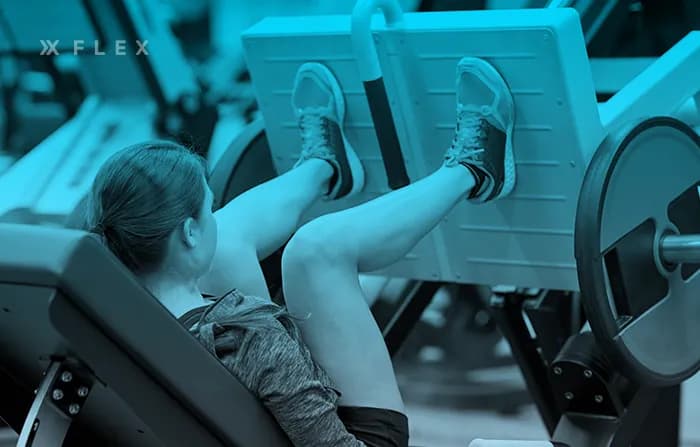Leg Press Foot Placement: Hit Glutes Hamstrings and Quads
This is a guide to leg press machines. It will help you discover the best leg press foot placement to hit glutes, quads or hamstrings.
For a complete lower body workout, the leg press is one of the best machines you can use at the gym.
Activating the major muscles of your lower half may seem simple enough.
However, there are many ways to maximize the ways you use the leg press, targeting the different muscles to load on some heavyweight.
Which stance is better for the glutes, and how can you press to target your quads? And does the type of leg press you use make a difference in your routine?
Let’s get acquainted with the mighty leg press. After reading this, we guarantee you’ll find new moves to amp up your leg day session.
Leg Press Machine— Muscles Worked
The leg press targets four primary areas of the legs:
- Quadriceps
- Hamstrings
- Gluteus maximus (glutes)
- Calves
By understanding a bit more about these machines and how each of them functions, you can easily tailor your workouts to hit one (or all) of these muscles more effectively.
To start, let’s look at the different leg presses you can find in commercial gyms.
Types of Leg Press Machines
What types of machines can you use to press out your leg muscles?
There are a few different options and varieties you can try to target your glutes, quads, hamstrings and calves.
Vertical Leg Press Machine
The vertical leg press requires you to lie on your back, pressing the legs up to lift your weight in a vertical motion.
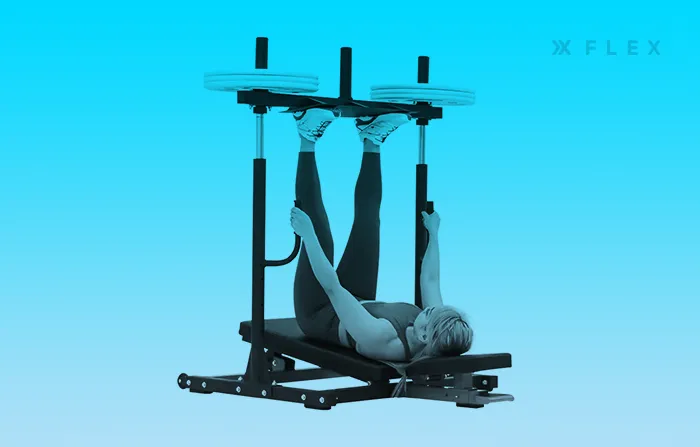
Horizontal Leg Press Machine
A horizontal or seated leg press is common to see in gyms. This is the most common type of leg press that you’ll see in the gym.
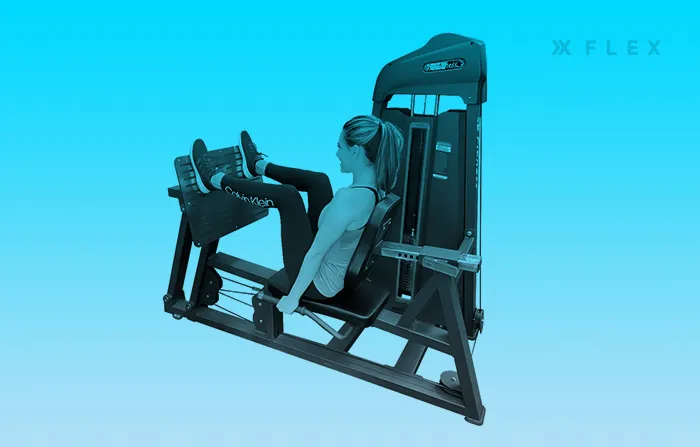
Unlike other presses, the horizontal press usually features a weight stack with a pin for loading. Because of this loading method, it is more accessible to newer lifters. Seated leg press foot placement is easiest to optimize for your workout, compared to a vertical press.
Keep this in mind if you’re still experimenting with which foot stance is most comfortable for you.
45-degree Leg Press Machine
This machine looks exactly as it sounds and falls partway between the horizontal and vertical presses. The 45-degree leg press is common to see in commercial gyms.
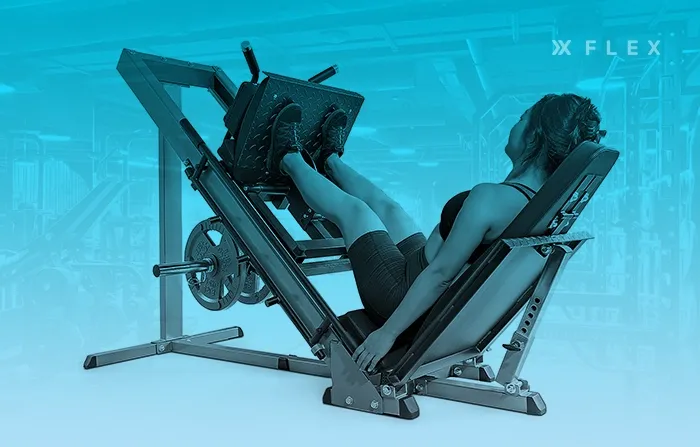
With a reclined position, it offers a better range of motion than the horizontal press. Vertical and 45-degree presses are more commonly barbell-loaded. This can make them a bit more challenging if you’re new to the gym.
That being said, you can usually add far more weight than you could to a weight stack to make for a more challenging lift.
Gym tip: If you want to try out a 45-degree press, make sure to get comfortable with loading barbells onto your press. It may feel cumbersome or awkward, but barbell-loaded machines allow you to lift some big weights for massive gains.
If you’re worried about the safety of loading plates onto your machines, ask an experienced lifter to help you or spot you. That way, you can make sure your load is on safely for a heavy press.
Leg Press vs. Squats
When honing in on those glutes and quads, you’re probably thinking— what’s the difference between hitting the leg press and the squat rack?
The answer lies in the amount of stability that each mechanism offers. Squats and leg press machines work virtually the same muscles. But the leg press is a more stable move than the squat for beginners.
Why?
In a leg press, you are seated. This gives your body more contact points with the ground (your seat, in this case), which absorbs more of the effort of stabilizing the body. In a squat, your only ground contact is your feet. So the rest of the body must perform all the work of stabilizing without support.
Squatting with a barbell requires more stabilizer muscle work.
Think about it: when you are standing upright, it takes a lot more core work to balance compared to a sitting-down position.
When you’re working with a barbell and a heavy load, this becomes even more evident.
Using a leg press allows you to apply more linear force so you can directly and aggressively target the leg muscles without worrying too much about your balance.
Types of Foot Placement
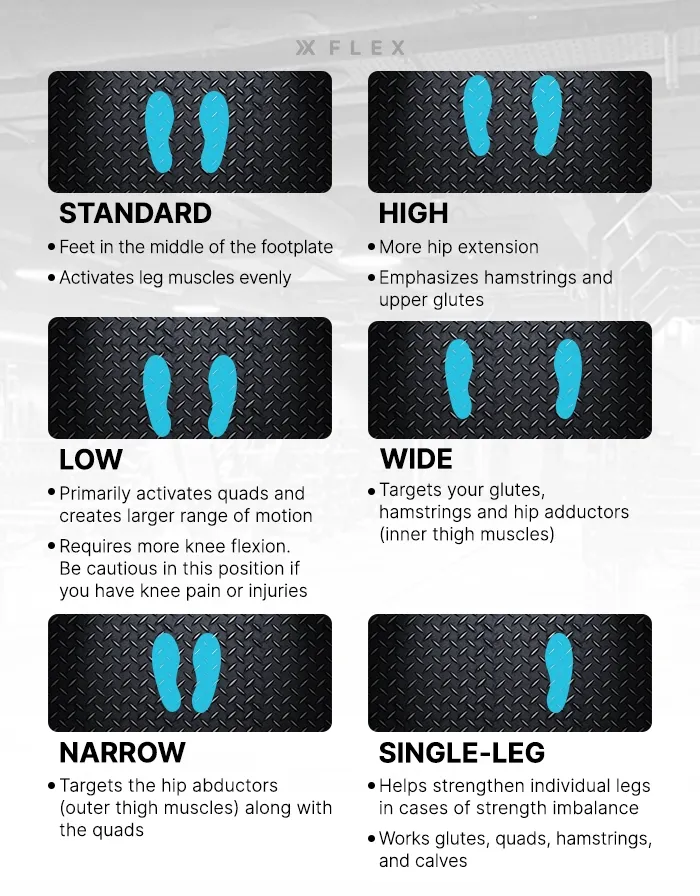
Standard Placement
This means a central foot position for a leg press. If you’re looking for an overall balanced movement that targets the lower body muscles equally, start with a standard placement.
In the center of your footplate, place the feet shoulder-width apart. Keep equal distance between the top, bottom, left, and right edges of the plate.
If you’re new to the leg press machine, this variation is for you. Using a standard placement helps you get a feel for your body on the press and the general motion of working through the biggest muscles of the legs.
High Foot Placement
Placing your feet high on the footplate during your leg press results in a butt-focused press. This is the best leg press placement for the glutes.
Low Foot Placement
By bringing your feet down low on the footplate of your leg press machine, you work the rectus femoris muscles. Lower foot placement requires less work from the hip flexors but may require greater knee flexion to hit the quads.
Be aware here if you have a knee issue. Although you will feel better quadriceps activation with a low foot placement, the associated knee flexion can cause less steadiness in your movement.
Wide Stance
Placing your legs in a wide stance on the leg press machine helps work your inner thighs. These muscles are called the hip adductors.
Narrow Stance
Using a narrow stance for your leg press works the outsides of your thighs or your hip abductors.
Both the abductors and adductors are critical muscles for lower body control. Your legs play a key role in developing your capacity for functional movement, so it’s important to keep these powerhouse muscles strong!
Once you get comfortable with the standard foot position, try out narrow, wide, high, and low. What do you notice about the sensations in your body?
It can be beneficial to keep a log of these different moves since it’s a lot to remember at work. Once you learn which stance your body craves most, you can start to work this into your day-to-day gym routine.
One Leg Press
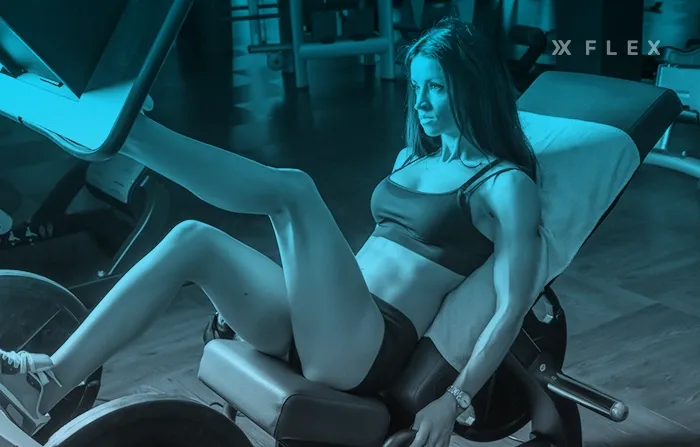
Performing a one-legged press instead of using both legs helps you target leg strength imbalances. You can try this move facing forward to engage all the muscles of one leg or try a side-facing variation to attack your side glutes.
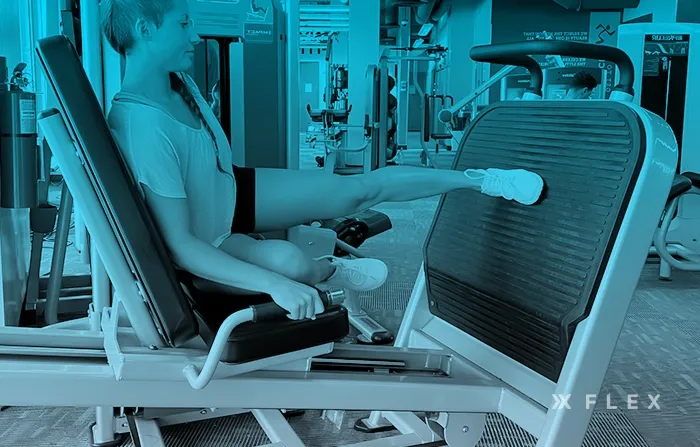
If you don’t struggle with a muscular imbalance and simply want to isolate the legs one at a time, make sure to work this move evenly on both sides to balance out the effort in your body.
Foot Rotation
Does it matter if you rotate your feet on the plate when you are operating the leg press? Some research shows a slight correlation between rotated feet and activating your vastus medialis muscle. This is a muscle that helps stabilize your kneecaps and move your knees.
However, there are some limits to the study methodology. So more research would need to be done to determine whether foot rotation makes a difference in the leg press.
Best Leg Press Foot Placement for Glutes
Placing your feet high up on the footplate helps you to activate your glutes. If you are looking for a glute-dominant press variation, give high foot placement a try.
Best Leg Press Machine Foot Placement for Quads
To target the quads, a lower foot placement is your best bet. This stance helps reduce flexion and extension in the hips, working more from the knee.
Adjusting the load in this way helps take work out of the glutes and bring it into the quadriceps area.
Big Picture
The leg press is one of the best moves you can do for heavy, leg-focused moves.
Similar to the squat, it helps build your hamstrings, quads, glutes, and calves. But although they’re similar, leg presses require less work from your core and stabilizer muscles. If you’re not quite ready to step up to the squat rack, the leg press is a great introductory move to get you amped up.
This lets you focus maximum effort on heavy, linear lifting moves.
There are three main types of leg presses you’ll probably see at commercial gyms: horizontal, seated leg presses, 45-degree leg presses, and vertical leg presses.
Each of these press types has its benefits. Horizontal presses are the most accessible for beginners, so start there and work your way up.
If you’re finding a weight stack too light and want to load your press with plates, a barbell-loaded press can be a good alternative.
Be careful when you’re loading this type of leg press machine. Barbell loading is a bit more clumsy than working with a weight stack, so don’t be shy to ask if you need a hand.
Leg press muscles can target your whole lower half, or you may choose to concentrate the work in one area.
Using a high-leg placement on the leg press plate will help target your glutes. A low leg placement works your quads since it requires less hip movement. Wide and narrow placements also help you work the abductor and adductor muscles. Finally, try a one-legged press to target the glutes.
How Do I Build My Glutes?
Remember to even out both sides to practice isolating your butt muscles for strength.
If you want to know more about targeting your glute muscles and what butt shape to focus on, you can read Heart-Shaped Ass, Butt Shapes, and Square Butt.
Flex AI offers an all-in-one workout platform to help you learn new exercises, visualize your fitness journey, and keep all your PRs in one place.
We’ve made it simple to work on customized fitness plans or to introduce a little friendly competition to your fitness community by sharing exercises with your friends. Get started for free through the Flex fitness app.
Related articles


Get fit with Flex
Build muscle & lose weight fast for free.
Available on iPhone + Apple Watch
